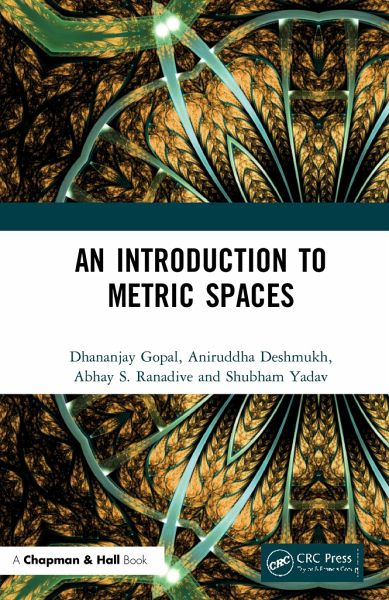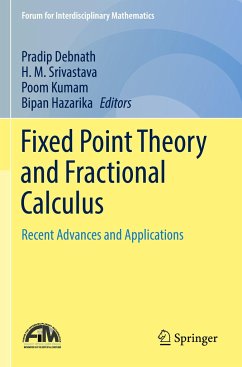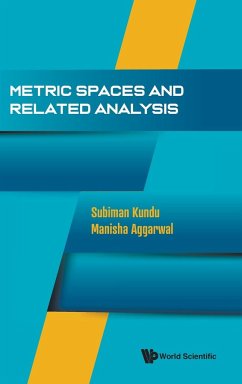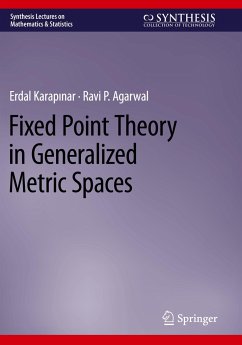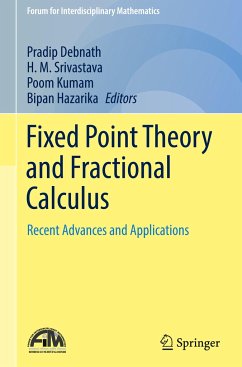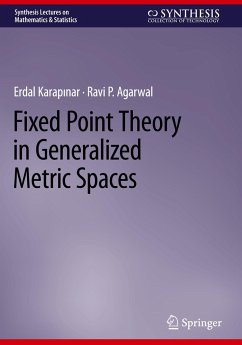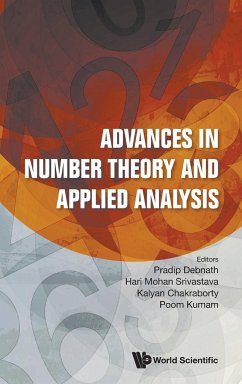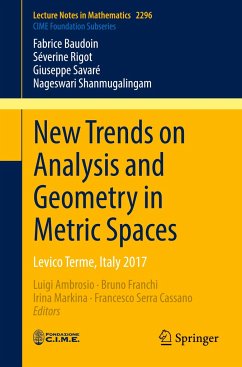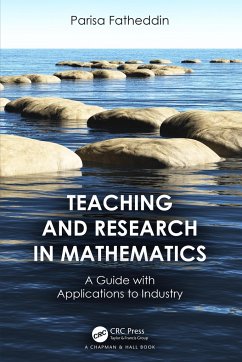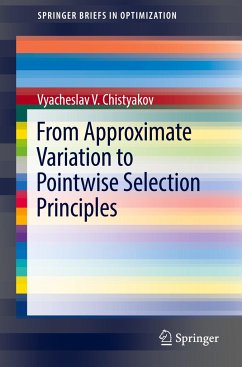An Introduction to Metric Spaces
Versandkostenfrei!
Versandfertig in 1-2 Wochen
Weitere Ausgaben:

PAYBACK Punkte
66 °P sammeln!




This book is designed to provide an extensive understanding of Metric spaces. It presents the basics of metric spaces in a natural way which encourages geometric thinking.
Dhananjay Gopal Associate Professor of Mathematics in Guru Ghasidas Vishwavidyalaya (A Central University), Bilaspur (C.G.) India. He was a visiting Professor at the Department of Mathematics, University of Jaen, Spain for the spring semester of 2023. He was Assistant Professor of Applied Mathematics at S.V. National Institute of Technology, Surat, Gujarat, from 2009 to 2020. He has earned his doctorate in Mathematics from Guru Ghasidas University, Bilaspur, India and is currently. His research interest is in the theory of Nonlinear Analysis and Fuzzy Metric Fixed Point Theory. He has authored more than 110 papers in journals, proceedings and three books in the field of metric spaces and fixed point theory. He is an editorial board member of three international journals and a regular reviewer of several journals published by international publishers. He was the guest editor of the special issue " Fixed point theory in abstract metric spaces with generalised contractive conditions; new methods, algorithms, and applications", in the Journal of Mathematics and a Special Issue on "Nonlinear operator theory and its applications" in the Journal of function spaces. D. Gopal has active research collaborations with KMUTT, Bangkok, Thammasat University Bangkok, and Jaen University Spain. Mr. Aniruddha Deshmukh is currently a research scholar in the area of Harmonic Analysis and k-plane transform Group from Indian Institute of Technology, Indore, India of (Integrated) MSc Mathematics and is associated to the Applied Mathematics and Humanities Department, S V National Institute of Technology, Surat, Gujarat, India. He has been an active student in the department and has initiated many activities for the benefit of the students, especially as a member of the science community (student chapter), known by the name of SCOSH. During his course, he has also attended various internships and workshop such as the Mathematics Training and Talent Search (MTTS) Programme for two consecutive years (2017-2018) and has also done a project on the qualitative questions on Differential Equations at Indian Institute of Technology (IIT), Gandhinagar, Gujarat, India in 2019. He has also qualified CSIR-NET JRF. Furthermore, his research interest focuses on Linear Algebra and Analysis and their applicability in solving some real-world problems. Abhay S. Ranadive is a Professor at the Department of Pure & Applied Mathematics Ghasidas Vishwavidyalaya (A Central University), Bilaspur, Chattisgarh, India. He has been teaching at the university for the last 30 years. He is author and co-author of several papers in journals and proceedings. He is devoted to general research on the theory of fuzzy sets and fuzzy logic, modules, and metric fixed point. Mr. Shubham Yadav is a research scholar in the area of Geometry and Topology from Harish-Chandra Research Institute (HRI) Prayagraj (Allahabad), Uttar Pradesh, India and is associated to the Applied Mathematics and Humanities Department, S V National Institute of Technology, Surat, Gujarat, India. As a member of SCOSH the student prominent science community in the institute, he has attended and organized various workshops and seminars. He also attended Madhava Mathematics Camp 2017. He did an internship on the calculus of fuzzy numbers at NIT, Trichy and one on operator theory at IIT, Hyderabad. He has also qualified for JRF. His main research interests are functional analysis and fuzzy sets with a knack for learning abstract mathematical concepts.
Produktdetails
- Verlag: Chapman and Hall/CRC
- Seitenzahl: 304
- Erscheinungstermin: 15. Juli 2020
- Englisch
- Abmessung: 240mm x 161mm x 21mm
- Gewicht: 622g
- ISBN-13: 9780367493486
- ISBN-10: 0367493489
- Artikelnr.: 59866074
Herstellerkennzeichnung
Libri GmbH
Europaallee 1
36244 Bad Hersfeld
gpsr@libri.de
Für dieses Produkt wurde noch keine Bewertung abgegeben. Wir würden uns sehr freuen, wenn du die erste Bewertung schreibst!
Eine Bewertung schreiben
Eine Bewertung schreiben
Andere Kunden interessierten sich für




